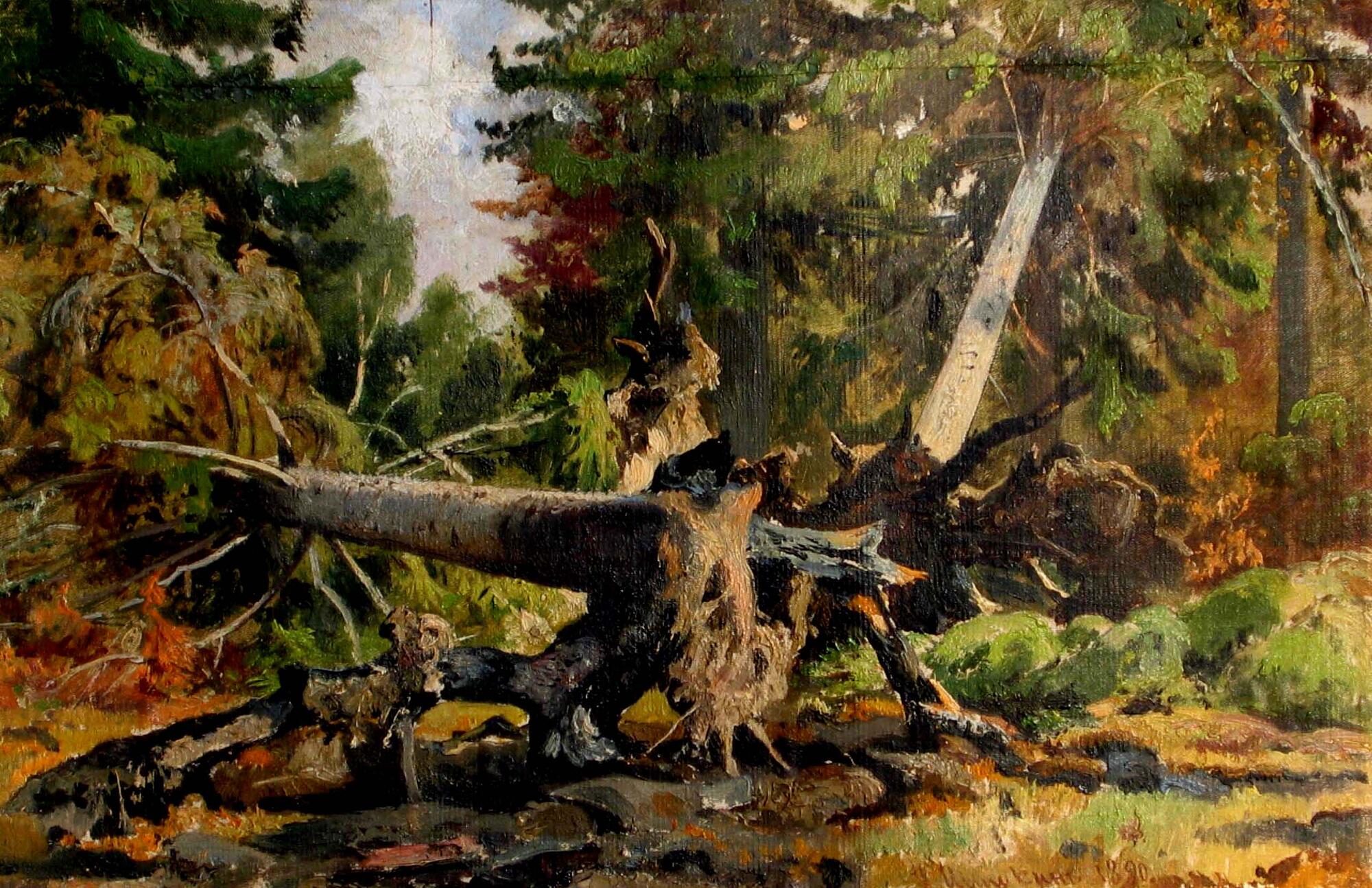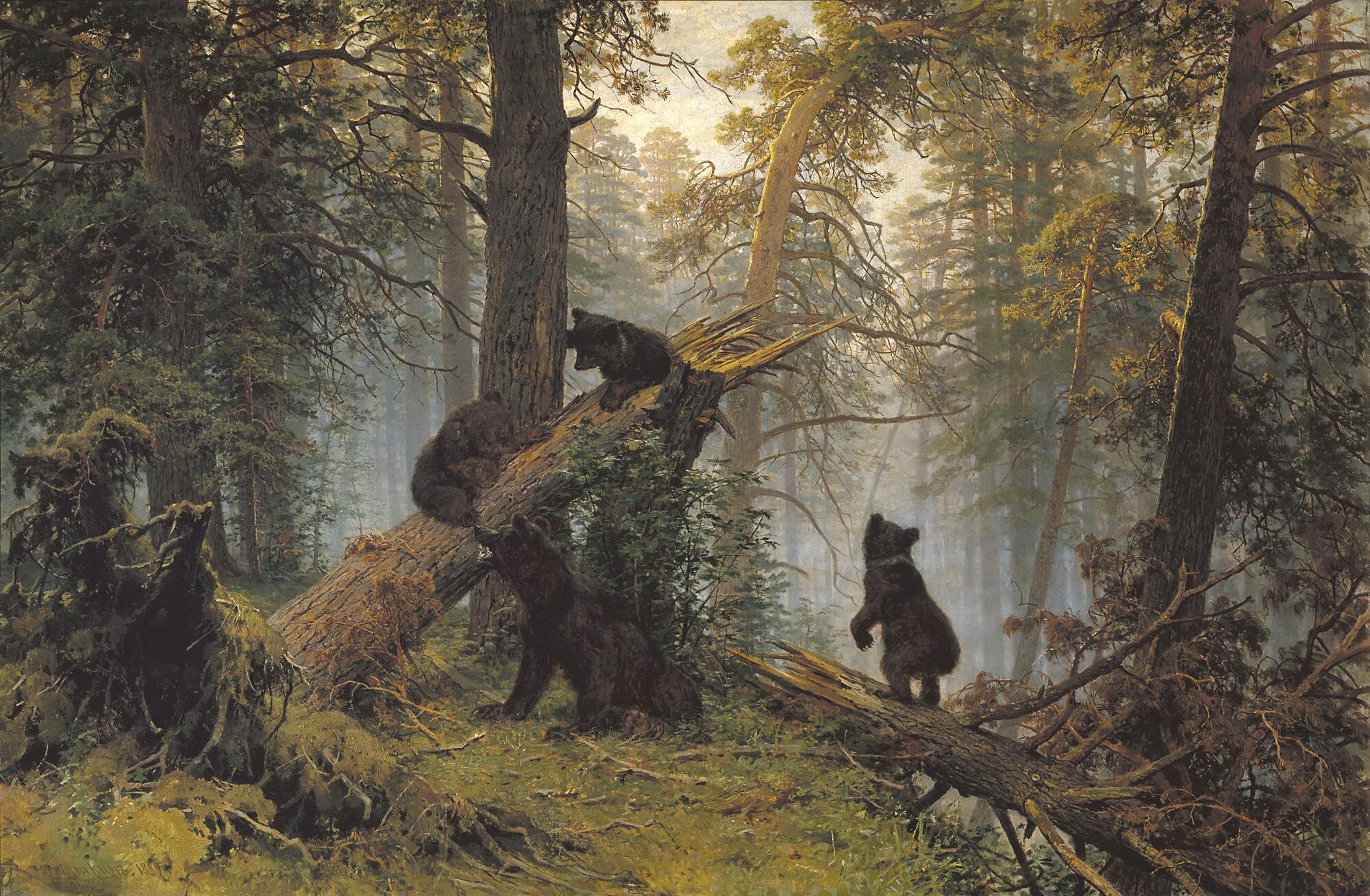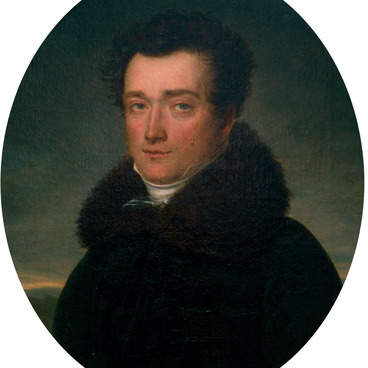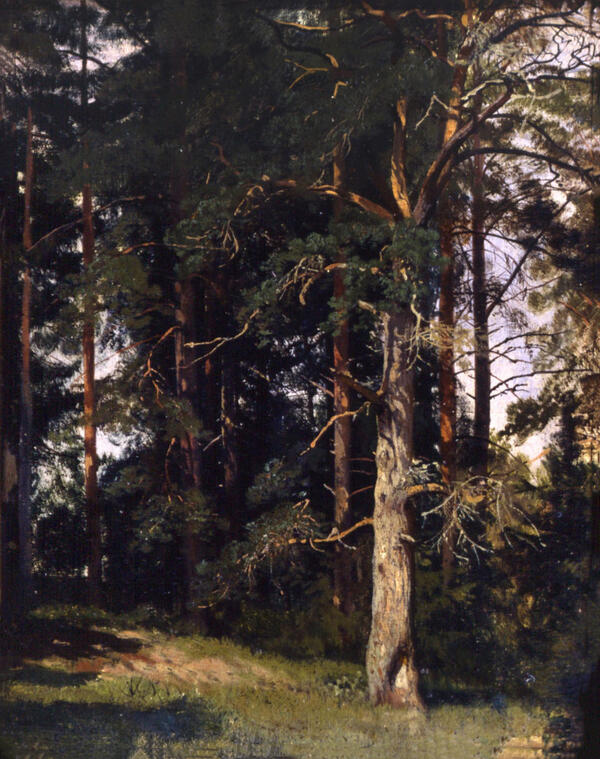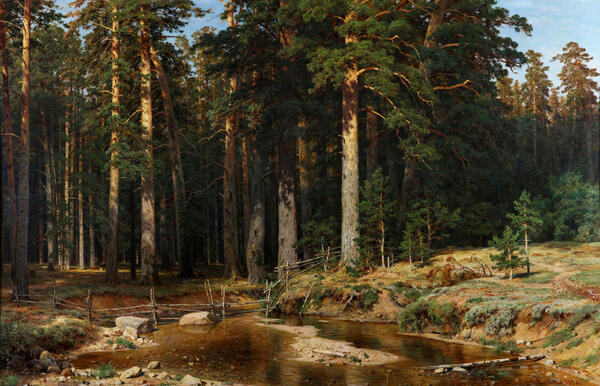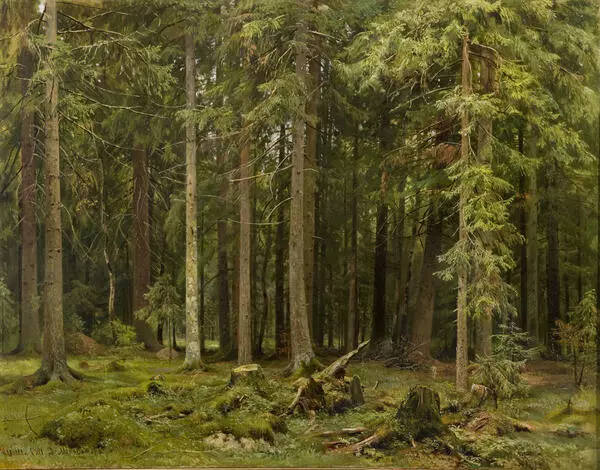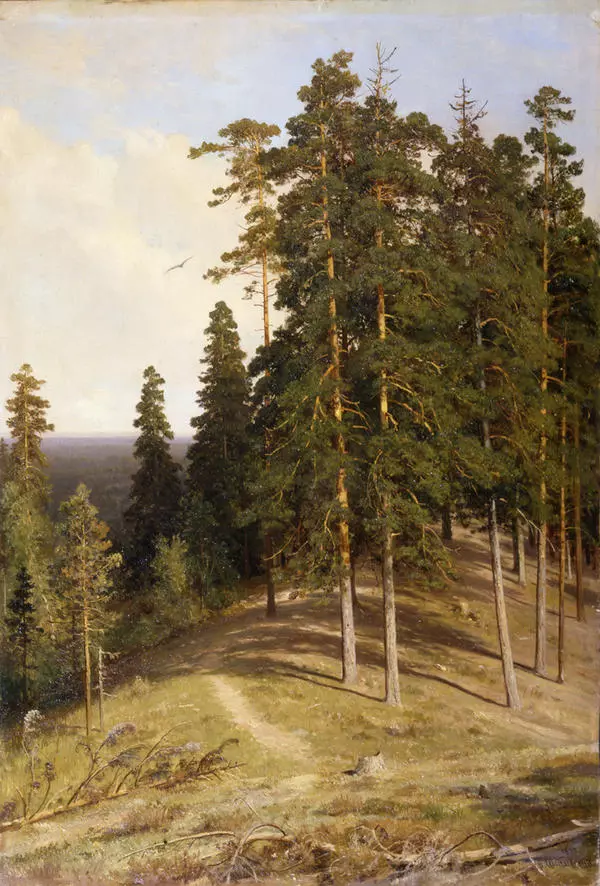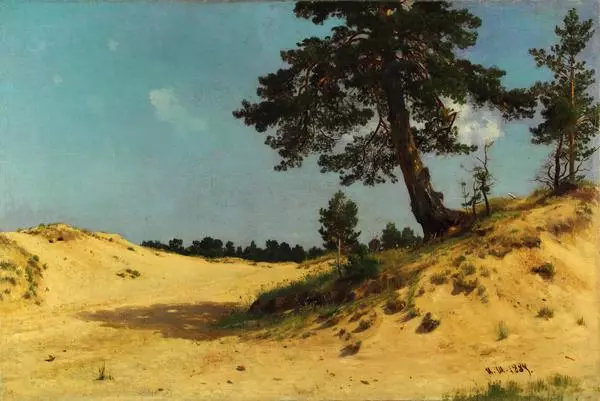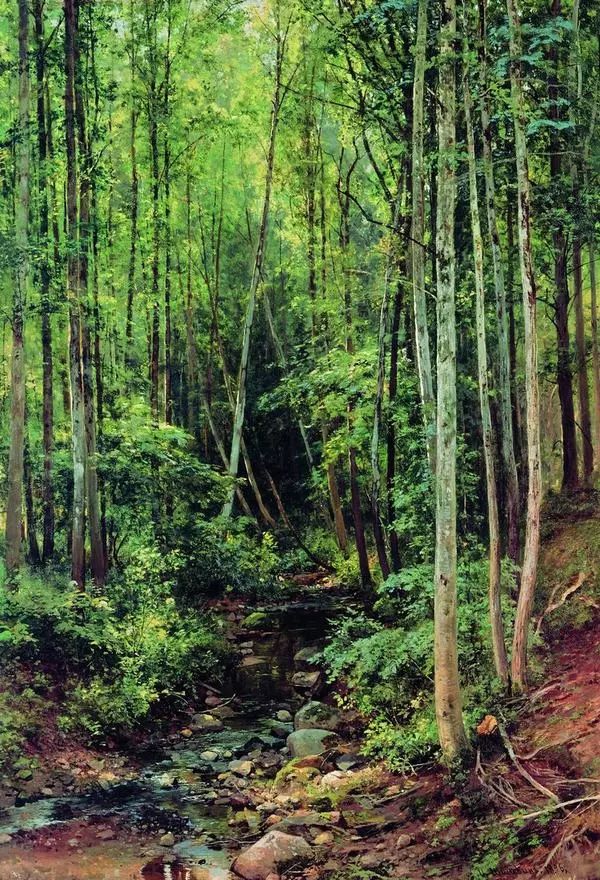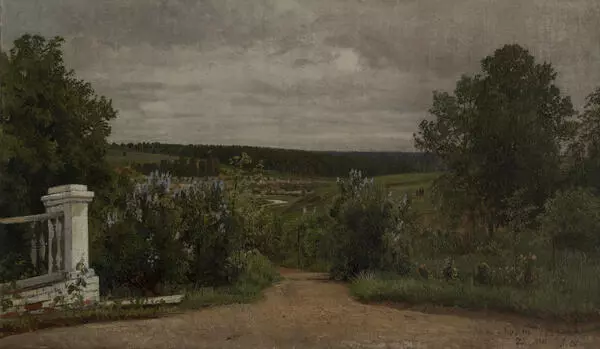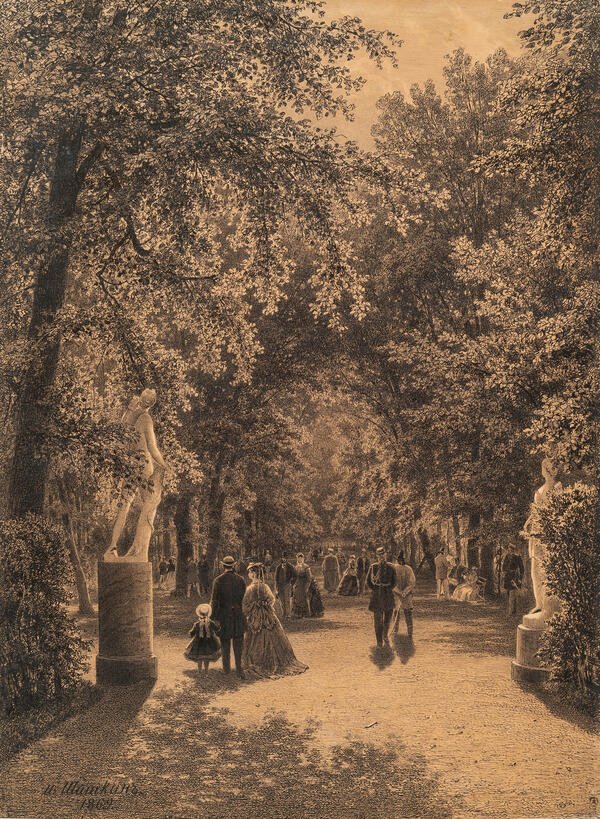Ivan Ivanovich Shishkin (1832–1898) was an outstanding Russian landscaper. In 1852, he entered Moscow School of Painting, Sculpture and Architecture and began creating his multiple landscape sketches and drafts. Soon he became famous around all School. It has been said that Shishkin ‘paints such views like no one else before him: just a simple field, forest or river, but he pictures them as exquisite as Switzerland’s’.
Since 1857, the artist continued his education at the Imperial Academy of Arts. In the late 1850s, the painter worked a lot on Valaam. His oeuvres were highly appreciated; the views of Valaam brought the artist a real success. In 1858 he received a large silver medal for the sketch “Pine on Valaam”, in 1859 - for the landscape “Gorge on Valaam” - a small gold medal, and, finally, in 1860 for two paintings with the same title “View on the island of Valaam. Kukko area” the artist received a large gold medal.
In 1862 Shishkin went to the pensioner’s trip abroad, he worked in Germany and Switzerland, visited France, the Czech Republic, Belgium and Holland.
In 1866, he returned to St. Petersburg. Since then, the painter has made most of his artistic trips around Russia.
In 1870 Shishkin became close to the Itinerants, becoming one of the founders of the Association of Traveling Art Exhibitions. He especially made friends with Ivan Nikolaevich Kramskoy. Together they traveled across Russia, making sketches. Kramskoy admired Shishkin’s talent, and stated: “He [Shishkin] is still immeasurably higher than all, taken together, until now… Shishkin is a milestone in the development of the Russian landscape, this man a school, but a living school”…
Indeed, in the history of Russian painting, Shishkin became the founder of the national realistic landscape. His art reflected the monumentality of Russian nature: huge spruces, wide fields, dense forests. It may seem that such a painting does not carry any special semantic message. However, in this particular case, Shishkin’s love for the Motherland was manifested precisely in his attention to its nature. With the interest of a biologist, Shishkin studied the depicted nature: he examined the plants from all sides, felt the tree trunks, paid attention to even the smallest of leaves.
An important aspect of the artist’s work were sketches, which served as a means of studying nature. One of his sketches “Old Firs” is kept in the Zaraysk Kremlin. The image of firs and pines is one of the painter’s favorite themes. The artist chose an interesting angle - he focused on the fallen trees, the protruding roots are seen in the foreground. A similar perspective is shown in his famous painting ‘Morning in a Pine Forest’ (1889). On the sketch, the artist experiments with the depiction of the complex shape of the cultivated roots, as well as with the picturesque image of earth and clay raised with the roots.
Contemporaries called Ivan Shishkin ‘The King of the Forest’, and we can say that until now this high, half-joking status still belongs to him.
In 1870 Shishkin became close to the Itinerants, becoming one of the founders of the Association of Traveling Art Exhibitions. He especially made friends with Ivan Nikolaevich Kramskoy. Together they traveled across Russia, making sketches. Kramskoy admired Shishkin’s talent, and stated: “He [Shishkin] is still immeasurably higher than all, taken together, until now… Shishkin is a milestone in the development of the Russian landscape, this man a school, but a living school”…
Indeed, in the history of Russian painting, Shishkin became the founder of the national realistic landscape. His art reflected the monumentality of Russian nature: huge spruces, wide fields, dense forests. It may seem that such a painting does not carry any special semantic message. However, in this particular case, Shishkin’s love for the Motherland was manifested precisely in his attention to its nature. With the interest of a biologist, Shishkin studied the depicted nature: he examined the plants from all sides, felt the tree trunks, paid attention to even the smallest of leaves.
An important aspect of the artist’s work were sketches, which served as a means of studying nature. One of his sketches “Old Firs” is kept in the Zaraysk Kremlin. The image of firs and pines is one of the painter’s favorite themes. The artist chose an interesting angle - he focused on the fallen trees, the protruding roots are seen in the foreground. A similar perspective is shown in his famous painting ‘Morning in a Pine Forest’ (1889). On the sketch, the artist experiments with the depiction of the complex shape of the cultivated roots, as well as with the picturesque image of earth and clay raised with the roots.
Contemporaries called Ivan Shishkin ‘The King of the Forest’, and we can say that until now this high, half-joking status still belongs to him.
